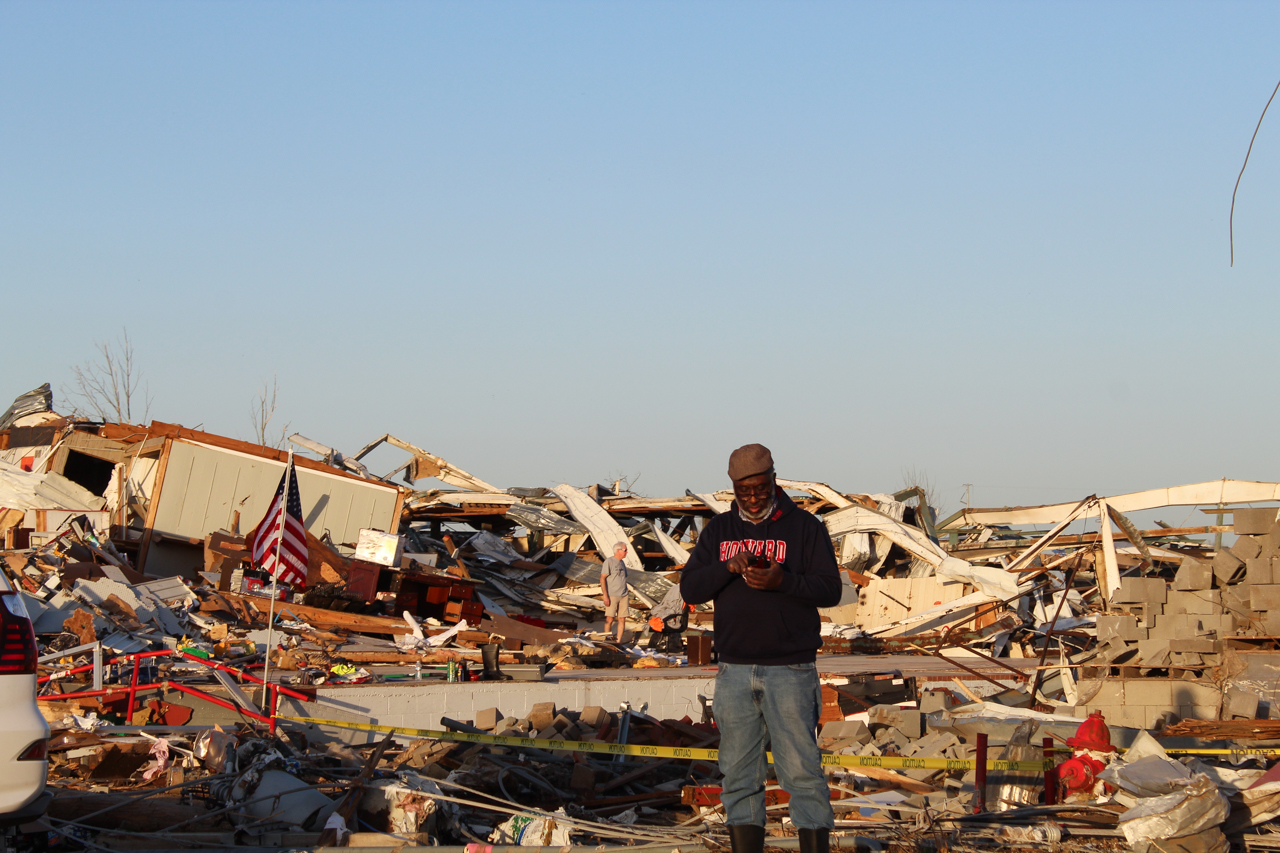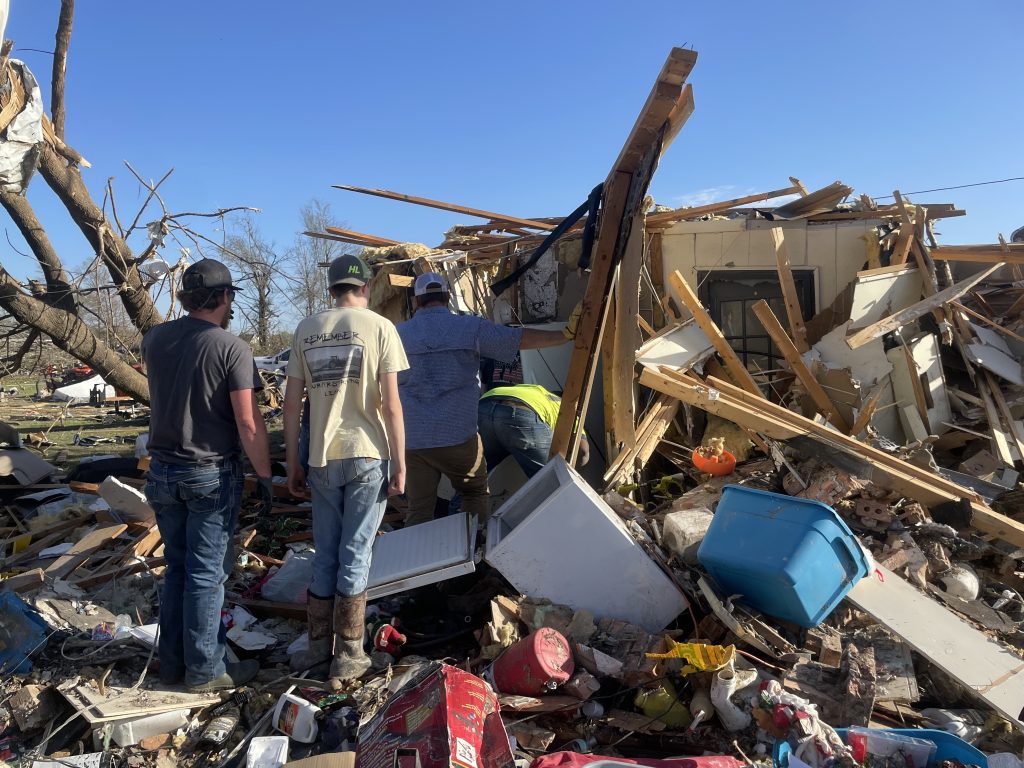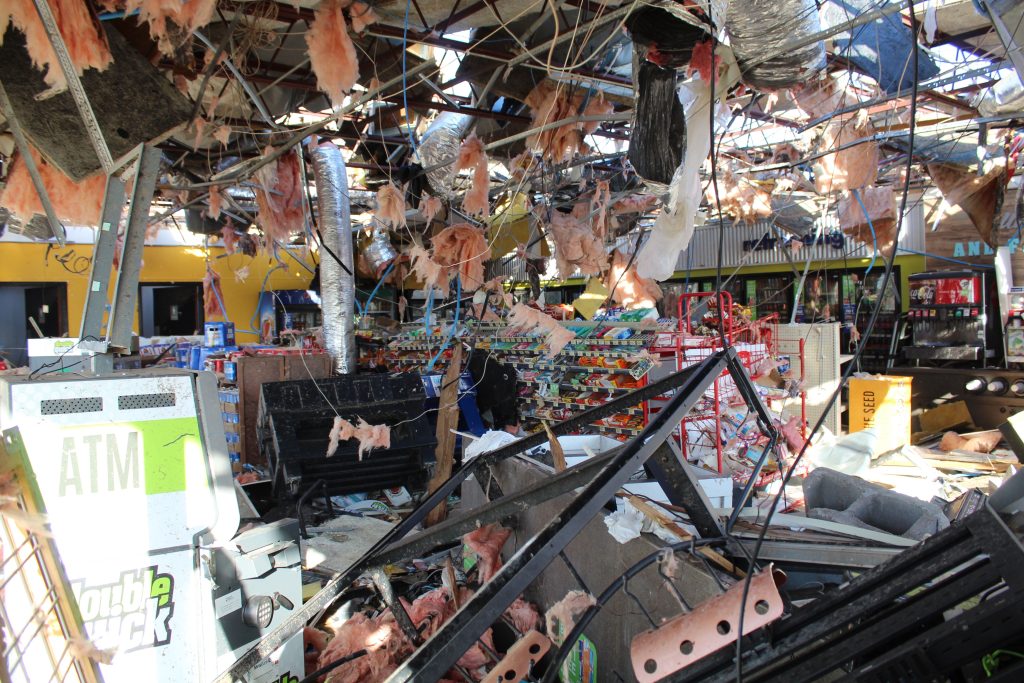
Rolling Fork and Amory are just two of several towns in Mississippi impacted by the system of tornadoes and storms that killed 25 and displaced hundreds.
Kharley Redmon, Violet Jira and Jordan Isbell contributed reporting.
Rolling Fork, a small town in the Mississippi Delta cradled by cotton farms, was the hardest hit town in a trail of destruction that spanned across Mississippi and Alabama.
Twenty-five Mississippians are dead, dozens missing and hundreds more are without a home in the wake of devastating storms and tornadoes that ripped across the state on Friday night, March 24.
In Rolling Fork alone, there are 18 confirmed deaths and nearly two dozen people missing in the town in the wake of the storm.
The number of casualties is likely to rise as more bodies are discovered.
“I’ve done two combat tours in the Middle East, and I’ve never seen destruction and chaos like this,” Jon Gebhardt, volunteer and UM ROTC instructor, said. “It’s a new kind of tragic. Seeing that widespread damage and sadness is heartbreaking.”
John Brown, the state executive officer for the Mississippi American Red Cross, coordinated efforts across disaster-struck areas to provide relief for victims of the tornadoes. He is currently based in Rolling Fork, but the Red Cross is operating in multiple areas across the state, including Winona and Amory.
“This a tornado that is three miles wide with a 200 miles long track,” Brown said.
Preliminary data suggests that the tornado that devastated Rolling Fork was an EF-4, the second most powerful kind of tornado on the Enhanced Fujita scale, which measures tornado intensity.
“Now, we need to provide a place for them (victims of the tornado) to lay their heads tonight. So, we’re trying to transform the armory to a shelter,” he said.
Providing that shelter is his top priority.
“We have a lot of people displaced: how do we keep them in a community that they call home,” Brown said.

Amory, approximately 200 miles northeast of Rolling Fork, was also struck by a tornado.
Supplies are being collected and distributed at the Amory Regional Museum.
“Yes, we need prayers, but prayers and 50 cents can buy someone a Coke,” Wayne Knox, director of the Amory Regional Museum, said.
Knox explained that most of the damage in Amory was in the northern and eastern parts of town, also the most impoverished, and the least likely to be insured.
“The more economically disadvantaged parts of town are here and here (pointing north and east on a map of Amory), which were the worst areas. You got folks who already were in a bad situation in their lives in an even worse one,” he said.
Back in Rolling Fork, the damage is more total.
“This town has a population of about 2,000 people. Although not everyone was displaced from their homes, obviously it has impacted their lives,” Gebhart said. “With water and energy out in the town, I would consider that displacement. Depending on your definition, probably the entirety of that 2,000 (are displaced).”
Gebhardt, in addition to his position at UM, is a first lieutenant in the Mississippi Army National Guard. He arrived early Saturday morning around 1 a.m., a few hours after the tornado touched down in Rolling Fork.
“When I got on site, I worked solo, starting on Walnut Road and working my way to the command center. On my way there I was able to help a couple people and unfortunately came across some people I could not help,” he said.
Gebhardt quickly realized the need for a base of operations to direct search and rescue efforts as well as provide medical assistance, food, water and shelter to victims of the disaster.
“Last night, we did everything we could to set up this base of operations for today,” Gebhardt said.
Gebhardt said that the base of operations is equipped with cots to house “300 to 400 people as a whole this evening.”
There are other official shelters that are equipped to provide support to victims in Silver City and Amony, cities that were also heavily impacted by the storm.
“We’re trying to find out if we can house some people in hotels in nearby cities,” Calvin Stewart, first ward alderman for the city, said. “The first stage was rescue and recovery, and we’re almost finished with that stage. The next thing is to assess the needs of the people here in the community and get the help needed.”

Stewart remarked on visits to the city from prominent state politicians, such as Gov. Tate Reeves and Attorney General Lynn Fitch.
“The governor has been in, our local senator and representatives, the attorney general is still here. Everybody is coming to the aid of Rolling Fork,” Steward said.
Fitch spoke with reporters from The Daily Mississippian, praising the ability of Missisippians to come together in times of crisis, but declined to give any official comment.
Stewart also added that other, nongovernmental organizations were providing supplies and aid to victims, too: “We have a lot of churches in the community that have set up and are doing the same thing, feeding people and handing out supplies.”
He talked about the extent of the damage sustained by his constituents, and concerns about weather in the coming days impacting the response effort.
“In my district alone, about 50% of my residents are displaced,” Stewart said. “It’s a great number, we don’t have any concrete figures as of right now because this is the first day, and we’re moving quickly because there’s some bad weather coming in again tonight and tomorrow, but we’ll be right back out on Monday trying to get those numbers to figure out how we can best help the needs of those citizens.”
In addition to outside help, the Rolling Fork community has been quick to gather resources, mobilize and assist one another. Despite the community’s quick response, the reality of what has happened to their home is still setting in.
“This is the kind of thing you see on the TV, in movies,” Corina Sanders said. Sanders does not live in Rolling Fork, but her mother does. She was in town during the storm.
“You never imagine something like this happening here. But here we are.”
Brown emphasized that the Red Cross’ work in Rolling Fork and other impacted towns is far from over.
“We will probably be here longer, because you have social and economic challenges, and also the housing stock is pretty much zero,” Brown said. “We are having more and more billion dollar disasters, more and more disasters that displace.”



























